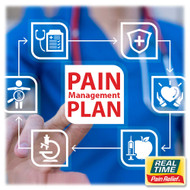Pain Management Clinics and Multidisciplinary Approaches
Posted by Dennis R. Escalera on 1st Jul 2024
For individuals suffering from chronic pain, a comprehensive approach to treatment can often provide the best outcomes. Pain management clinics offer multidisciplinary approaches that combine various therapies to address pain from multiple angles. This article explores the benefits of these clinics and the treatments they provide.
Overview of Pain Management Clinics
Pain management clinics are specialized healthcare facilities focused on the diagnosis and treatment of chronic pain. These clinics bring together a team of healthcare professionals, including physicians, physical therapists, psychologists, and other specialists, to provide a holistic approach to pain management.
Benefits of a Multidisciplinary Approach
- Comprehensive Care
- Integration of Services: Multidisciplinary clinics offer a range of services under one roof, ensuring patients receive coordinated care. This approach helps in addressing the physical, psychological, and social aspects of pain.
- Personalized Treatment Plans: By involving various specialists, clinics can develop individualized treatment plans tailored to each patient’s unique needs and conditions.
- Improved Outcomes
- Enhanced Pain Relief: Combining multiple treatment modalities, such as medication, physical therapy, and psychological support, often leads to better pain management and improved functionality.
- Patient Education: Clinics emphasize patient education, teaching individuals about pain management techniques, lifestyle modifications, and self-care strategies that can reduce pain and improve quality of life.
Common Treatments and Therapies Offered
- Medication Management
- Role: Pain management specialists can prescribe medications, including nonsteroidal anti-inflammatory drugs (NSAIDs), opioids, and adjuvant medications, to help control pain.
- When Used: Medications are often part of a broader treatment plan to manage symptoms while other therapies take effect.
- Physical Therapy
- Role: Physical therapists work with patients to improve mobility, strength, and function. They use exercises, manual therapy, and modalities like heat or cold therapy to alleviate pain.
- When Used: Physical therapy is commonly recommended for musculoskeletal pain, post-surgical recovery, and chronic pain conditions.
- Psychological Support
- Role: Psychologists and counselors help patients cope with the emotional and mental aspects of chronic pain. Techniques such as cognitive-behavioral therapy (CBT) are used to manage stress, anxiety, and depression associated with chronic pain.
- When Used: Psychological support is beneficial for all patients, especially those experiencing significant emotional distress due to chronic pain.
- Interventional Procedures
- Role: Procedures like nerve blocks, epidural steroid injections, and radiofrequency ablations are performed to directly target pain sources.
- When Used: Interventional procedures are typically used when other treatments have not provided sufficient relief.
Examples of Multidisciplinary Pain Management
- Johns Hopkins Pain Treatment Center: This center provides services, including medication management, physical therapy, psychological support, and interventional procedures.
- Reference: "Pain Treatment Center." Johns Hopkins Medicine. https://www.hopkinsmedicine.org/blaustein-pain-treatment-center
- Mayo Clinic Pain Rehabilitation Center: Offers a comprehensive program that includes medical management, physical therapy, occupational therapy, and psychological counseling.
- Reference: "Pain Rehabilitation Center." Mayo Clinic. https://www.mayoclinic.org/departments-centers/pain-rehabilitation-center
Conclusion
Pain management clinics that utilize a multidisciplinary approach offer a comprehensive and effective way to treat chronic pain. By integrating various treatments and involving multiple specialists, these clinics can provide personalized care that addresses all aspects of pain. For individuals struggling with chronic pain, seeking out a pain management clinic may be a valuable step towards achieving better pain control and improving overall quality of life.
References
- "Pain Treatment Center." Johns Hopkins Medicine. https://www.hopkinsmedicine.org/blaustein-pain-treatment-center
- "Pain Rehabilitation Center." Mayo Clinic. https://www.mayoclinic.org/departments-centers/pain-rehabilitation-center
- "Pain Management." Cleveland Clinic. https://my.clevelandclinic.org/health/treatments/21514-pain-management
- "Stanford Resource Guide to Chronic Pain Management." American Chronic Pain Association. https://www.acpanow.com/acpa-stanford-guide.html





